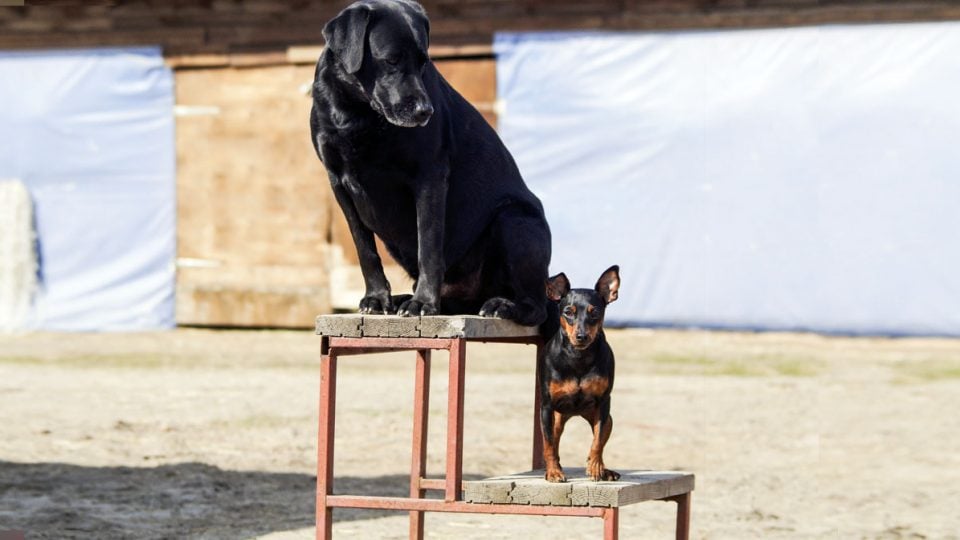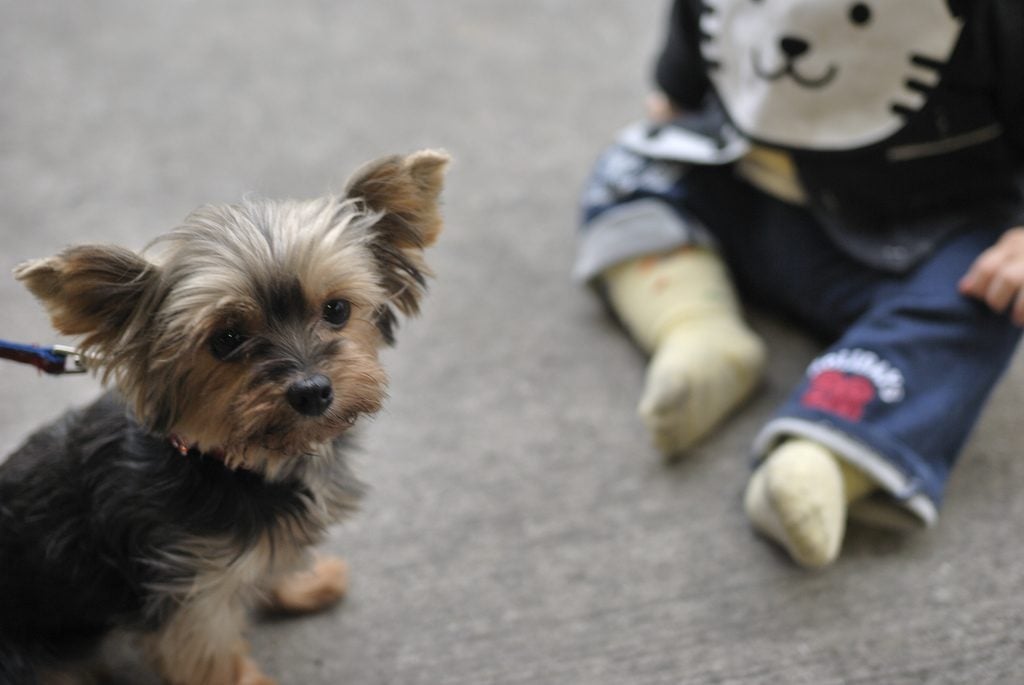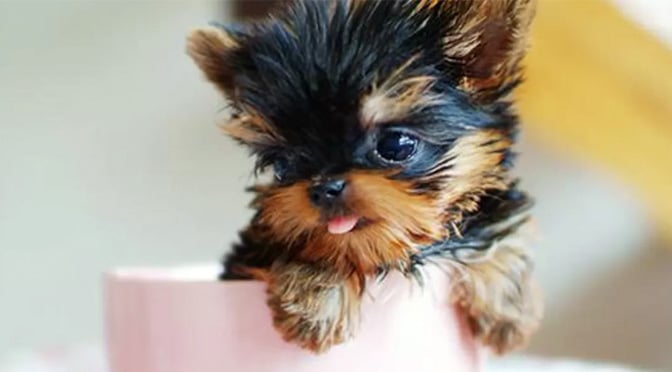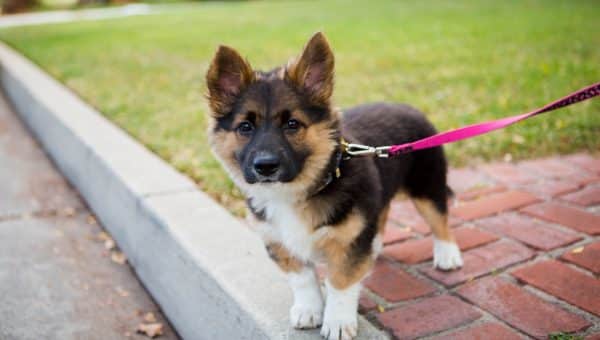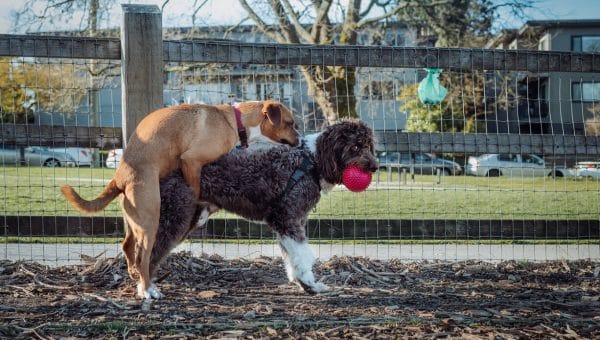As a trainer, I can tell you that small dogs get away with a lot.
A little dog jumping up on your grandmother is sweet. A large dog jumping up on your grandmother is an injury waiting to happen! A little dog barking at your neighbor is funny. A big dog barking at your neighbor is a threat.
When it comes to training a large dog vs. a small dog, the difference is not so much in their abilities as it is in our human requirements. Large dogs need a stronger stay and a more polite greeting. They have to be better trained and more docile than small dogs in order to move around safely in our human world.
When it comes to the mechanics of training, though, the differences are subtle. We use the same cues, same positive-reinforcement methods, and the same management strategies in order to shape a dog’s behavior.
But sometimes it’s those subtle differences that can get in the way of success. Here are some tips to help you troubleshoot your technique for optimal small vs. large dog training.
Compared to a small dog, you are huge
Dogs of all stripes show up at the beginners’ classes I teach at the San Francisco SPCA.
For me, half the fun is seeing this motley crew of pups learning together. But one of the mistakes I consistently see the guardians of small dogs make is the dreaded looming.
By looming, I mean bending over a small dog in a way that, to them, appears threatening. This can trigger anxiety in a little guy that prevents them from learning. Instead of leaning over your dog, stand upright or kneel and keep your hand signals in front of, not over top of, your dog.
Using the right position is important
So now you’re sitting in front of your tiny tot during training sessions. Things go great when you train, but when you ask your dog for a “sit” or a “down” at a different point, they look at you like you’re nuts.
The problem is your dog is terrible at generalizing. They think “sit” means “sit” only when you ask for it when you are sitting, too. They don’t understand “sit” applies only to their position, not yours.
To fix this problem, once you’ve achieved a consistent sit from your pup while you are seated, try the cue while you are in a slightly different position. Kneeling, for example, is halfway between sitting and standing.
Once you are getting a consistent response from that position, make yourself a little larger, perhaps standing with your knees bent, before ultimately moving into a standing position while cueing your dog.
Little dogs have little stomachs
While food isn’t the only reinforcer that works in rewards-based training, it’ s often the easiest one to use.
The problem is that little dogs fill up quickly and may be more sensitive to rich or fatty foods. A dog that is full or has a tummy ache is not going to be motivated to train for treats.
When you use food as a reinforcer, your dog needs only the tiniest taste to reward them. A crumb of turkey or chicken is just the right size for a little one. You can also try giving a teeny dab of baby food from your finger.
While I find cheese and high-fat meats like beef or pork work well for larger dogs, it often leads to digestion trouble with small dogs, so stick to leaner options.
Large dogs are at pocket height
A different food problem often occurs with large dogs—their noses are right at hip level, where your treat bag or pocket holds your food rewards. This may make it difficult for your dog to focus.
The first option is to wear your treat bag so the food is behind your back, out of your dog’s line of sight. If that’s not enough, try placing your rewards on a high surface like a shelf or using a non-food reward like a toy.
Some positions are harder for little bodies
I loathe generalizing canine abilities, because every dog is an individual. But the fact of the matter is that in my classes, small dogs more frequently have trouble learning a “sit” or “down” than larger dogs.
If your dog is having difficulty mastering these moves, it’s going to take some time, patience, and persistence on your part. Breaking the move down into smaller, more manageable pieces is key.
Instead of trying to get your dog to do a full down, for example, follow these steps:
- Reward the dog for bending their head and looking at the ground.
- Next, encourage them to stretch out one of their front legs, and reward for that.
- Continue in baby steps until you get a full “down.”
Another option is to “capture” the behavior. Keep an eye on your dog and look for times when he sits or lays down naturally. The moment you see it happen, throw an instantaneous party and reward your dog with something amazing.
The more dogs are rewarded for a behavior, the more often they will practice it. Soon, you’ll catch your dog laying down in your presence all the time, and you can begin to give the action a name (i.e., “down” or “sit”). Call it out right as they begin sliding into the position.
With practice associating the verbal cue with the action, your dog will be learn to respond correctly to your “sit” or “down” when you ask.
_
Featured image: Dreamstime
